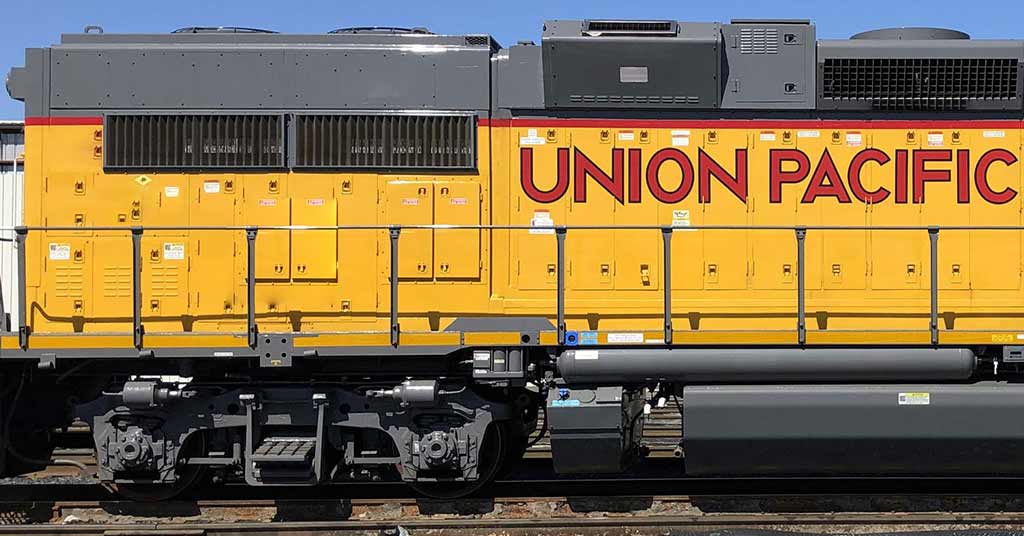60,000 Pounds of Ammonium Nitrate Chemical Vanish in Transit, Officials on High Alert
- 23-May-2023 12:50 PM
- Journalist: Nicholas Seifield
California: A major cause for concern has arisen as around 60,000 Pounds of Ammonium Nitrate - a chemical that can be used both as a fertilizer and an explosive - has gone missing. The chemical is believed to have gone astray during transit via rail from Cheyenne, Wyoming, to California last month. The rail car carrying the Ammonium Nitrate departed from a Dyno Nobel explosives manufacturing plant in Cheyenne on April 12. This unexpected loss of a potentially dangerous substance has caused widespread alarm and authorities are working tirelessly to locate the missing shipment.
According to latest reports, the Ammonium Nitrate chemical was found to be missing upon arrival of the rail car in Saltdale, California, an unincorporated community located over a thousand miles away from Cheyenne. The circumstances leading to the disappearance of the chemical remain unknown currently. Currently, the rail car is empty and, on its way, back to Wyoming. The use of Ammonium Nitrate has been linked to deadly accidents and terror attacks, making this sudden disappearance a cause for serious concern. Authorities are actively investigating the situation to recover the lost shipment and ensure public safety.
Tragically, Ammonium Nitrate has been linked to several deadly incidents in the past. In 1947, over 2,000 tons of the chemical exploded on a cargo ship that had docked at a port in Texas City, Texas, leading to a death toll of 581 people. In the same year, a Norwegian ship containing approximately 3,000 tons of Ammonium Nitrate also exploded in Brest, France, resulting in 29 fatalities.
More recently, this explosive chemical was used in the 1970 bombing on the University of Wisconsin–Madison campus, which caused one death and multiple injuries. The most infamous incident involving Ammonium Nitrate remains the 1995 Oklahoma City bombing, where 168 people lost their lives. These tragic events highlight the potential dangers posed by this substance and the need for utmost caution in handling it.
The highly explosive nature of Ammonium Nitrate was brought to light in 2013, when a fertilizer plant in West, Texas was rocked by a devastating blast caused by the chemical. The explosion resulted in the loss of 15 lives, caused injury to 200 people, and left hundreds of homes destroyed. Federal officials later characterized the incident as a "criminal act", underscoring the severity of the situation.
Ammonium Nitrate is a widely used chemical that has become part and parcel of the fertilizer industry, with many people using it on a routine basis without giving it a second thought. However, initial reports suggest that a leak in the rail car carrying this chemical may have caused the recent disappearance of around 60,000 Pounds of Ammonium Nitrate. As per regulatory protocols, rail shippers and railroads bear the responsibility of ensuring that such hazardous chemicals are transported safely and are properly secured.
Considering the missing shipment, the (FRA) is investigating whether any federal regulations were violated by the railroad company or the shipper. The FRA hopes to determine the cause of the leak and take corrective action to prevent further incidents.
Designed for ground application and rapid soil absorption, the Ammonium Nitrate fertilizer that went missing may have been lost due to a leak in the railcar during transit from its origin to destination. However, any potential release resulting from such a leak would not pose any known risk to public health or the environment. The company responsible for the shipment has launched an investigation into the matter, but it is still in its early stages and further details are pending.
According to preliminary investigations, the railcar carrying the Ammonium Nitrate was completely sealed when it departed from the Cheyenne facility and remained sealed until it reached Saltdale. However, it is suspected that a leak may have developed through the bottom gate of the railcar during transit, leading to the loss of the chemical. Given that the route taken by the train spans more than 1,000 miles, cutting through remote stretches of land in the western United States, locating the missing cargo and determining how it was released poses a significant challenge for the authorities. Further updates on the ongoing investigation are awaited.



